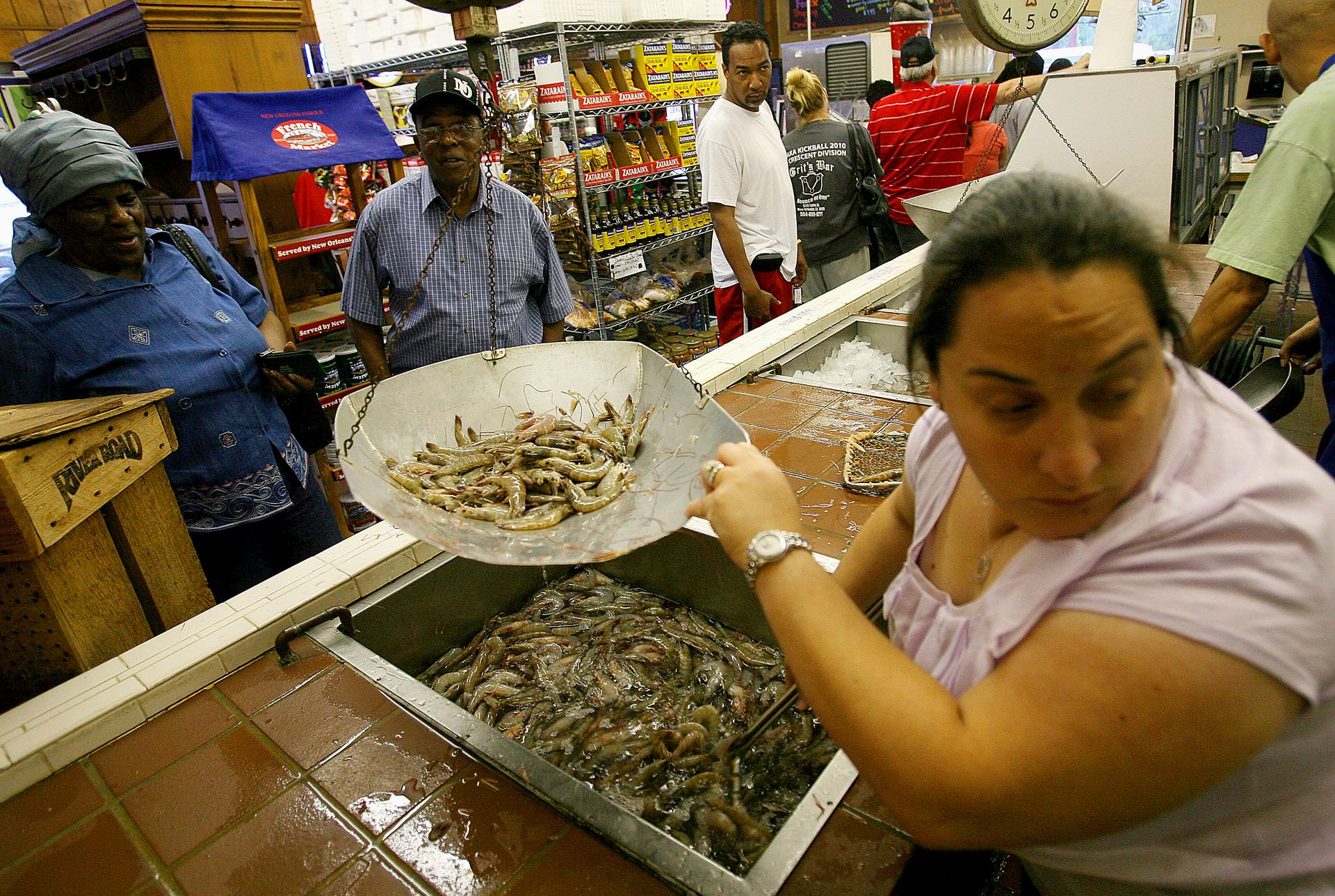How American seafood goes almost everywhere except America
Chandra Chifici at Deanie’s Seafood weighs shrimp for customers in Metairie, Louisiana, in 2010.
Something weird is going on in the US seafood industry.
“The United States controls more ocean than any country on Earth," saysPaul Greenberg, author of the new book, American Catch: The Fight for Our Local Seafood, "yet more than 85 percent of our seafood is imported. That's really strange."
And while Americans are busily eating imported fish and shrimp, the US commercial fishing industry exports about one-third of the nation’s seafood catch to countries overseas. “The whole system is a little out of whack,” Greenberg says.
Greenberg first started to write American Catch just after the Deepwater Horizon oil spill in the Gulf of Mexico. To his surprise, despite the scale of that disaster, what was really on the minds of Louisiana shrimpers was that foreign shrimp were “severely depressing the price of their wild product.”
Shrimp is America’s favorite seafood: We eat almost as much shrimp as salmon and tuna combined. But though American waters boast a wide variety of wild, flavorful shrimp, it turns out that most of the shrimp Americans eat is imported, much of it from shrimp farms in Asia.
According to Greenberg, a lot of it doesn’t even taste very good. In its farmed form, he says, shrimp is not particularly flavorful. You'd think this would make it unpopular for consumers, but that's not the case. “Americans actually don't really want a lot of flavor," Greenberg says. "They like kind of flavor-neutral things that they can deep-fry and put a lot of sauce on."
The situation with sockeye salmon in Alaska is equally strange. Alaska’s Bristol Bay is home to the largest sockeye salmon run remaining in the world, but 80 percent of the annual Alaska salmon harvest is exported to other countries. That includes a portion of the Alaskan salmon harvest that's frozen and sent to China, where it is defrosted, fileted, boned, refrozen — and then sent back to the US.
Bristol Bay is also the site of the proposed Pebble Mine that would involve digging out about 10 billion tons of earth and ore that would be processed on site. Salmon need pristine environments to thrive, Greenberg says, and the mine poses a huge threat to their continued existence.
If we need an example of what happens when an entire population of sea life is wiped out, take a look at New York City. New York's waters used to be home to literally trillions of oysters. But the Dutch and English settlers “loved, loved, loved the oysters,” says Greenberg. They ate them, ground down the shells and burned them for lime until they had basically “mined out the ecological infrastructure of the harbor.”
An oyster farming industry flourished for a long while after, but “once we started dumping [about] six million gallons of sewage a day into the water, that pretty much put an end to the oyster farming industry by the 1920’s,” Greenberg explains. “There are still some wild oysters left in the harbor, but they are a fraction of their former selves.”
Since the Clean Water Act of 1972, New York's harbor has gotten progressively cleaner. There's now enough dissolved oxygen in the water to support oyster life, Greenberg says — he's found several places where oysters are growing again. But it will be "many, many years, if not forever," before the oysters are safe to eat.
Despite all the challenges Greenberg outlines in his book, he remains optimistic about the future of American seafood. “American fisheries have been improving,” he says. “Since the 1996 Sustainable Fisheries Act, we have seen the rebuilding of over 30 different stocks of fish. I think we can positively continue in that direction.”
Every day, reporters and producers at The World are hard at work bringing you human-centered news from across the globe. But we can’t do it without you. We need your support to ensure we can continue this work for another year.
Make a gift today, and you’ll help us unlock a matching gift of $67,000!
